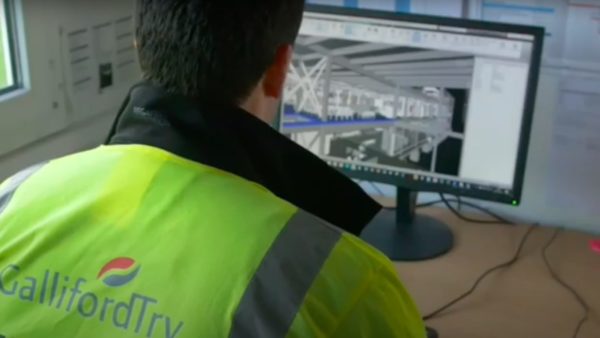- Client: Crossrail
- Lead Contractor: Crossrail
- BIM Tools: Bentley Microstation

BIM can mean so many different things, so we don’t use it in our contract documentation. We use ‘information management’ or ‘information modelling’.– Malcolm Taylor, Crossrail
Crossrail is both lagging behind the government’s Level 2 BIM agenda, and outpacing it. Its approach to BIM was defined before the contractual definitions in PAS 1192:2 were published, so procurement was based on tendering to designs rather than 3D models. But in project execution Crossrail is working in a Level 2 “common data environment” (CDE) with collaboration between no fewer than 60 major contractors and 25 design consultants. And it’s currently trialling a new “augmented reality” BIM database, which is more ambitious, more intuitive and with more functionality than anything attempted before.
Not that it’s actually using the “BIM” word, though, as technical information manager Malcolm Taylor explains: “The word can mean so many different things, so we don’t use it in any of our contract documentation. We use the words ‘information management’ or ‘information modelling’ – and London Underground does the same.”
The semantics reflect Crossrail’s fundamental view of BIM, where the 3D design models that dominate in the design stages become less critical as the project is built out, ceding to interlinked databases. “Models and databases are important at different lifecycle phases. When building something like Crossrail, you need to recognise the databases are just as important as the 3D models, and so you need to plan them at the same time,” explains Taylor.
At Crossrail, 3D designs created in Bentley Microstation are linked to a bespoke database built by US technology company EB – “with full-on plumbing and wiring between them,” says Taylor. Everyone on the project has access to the resulting CDE, with Taylor using the analogy of a library: individuals can log in, “borrow” the drawings and documents, modify them and upload. If Crossrail staff approve the changes, the updated documents become the working version.
As for the cost, Taylor points out that the IT bill for a major project like Crossrail using a conventional approach would have been considerable. “Document control software, contract administration software, RFI software – we got rid of all that and just used the database.”
Savings are real and substantive, but hard to quantify. “There are the indirect benefits of showing people how to undertake site activities, you can use visualisations to find significant safety benefits. Or a complicated sequence of construction that might involve 10 or 15 drawings and reports can be shown in 30 seconds – you get fantastic efficiencies,” says Taylor.
To communicate the benefits and impact of BIM, Crossrail and Bentley have also set up a BIM Academy, which has trained 520 contractor staff and, crucially, 100 staff delivering other government projects. “Contractors have embraced BIM because they know the efficiencies they can get, so the people who are struggling are the clients – they don’t have the same drivers to keep their technologies up to date,” argues Taylor.
Crossrail also operates an innovation programme where 10 major contractors each contributed around £25,000 – with Crossrail matching their investment – to create a fund that invests in piloting promising ideas that emerge from regular competitions. Taylor’s team has won funding to take “augmented reality”-style information interfaces onto site.
Holding up a tablet device in the tunnels, stations and sites, users will be able to access data in the 3D models, finding out what’s behind the cladding panels or how the ductwork will be installed. Or a designer can model passenger flows along a platform or modify signage placement in situ.
The technology does not rely on QR codes and cameras, Taylor says. Instead, it uses the same relational database management systems and GIS technology that our smartphones use to tell us how to get home from any location or where to find the nearest Costa. The AR/BIM system is being trialled for Whitechapel station and Custom House stations, using a user-friendly games style interface developed by software house Vuitnow.















